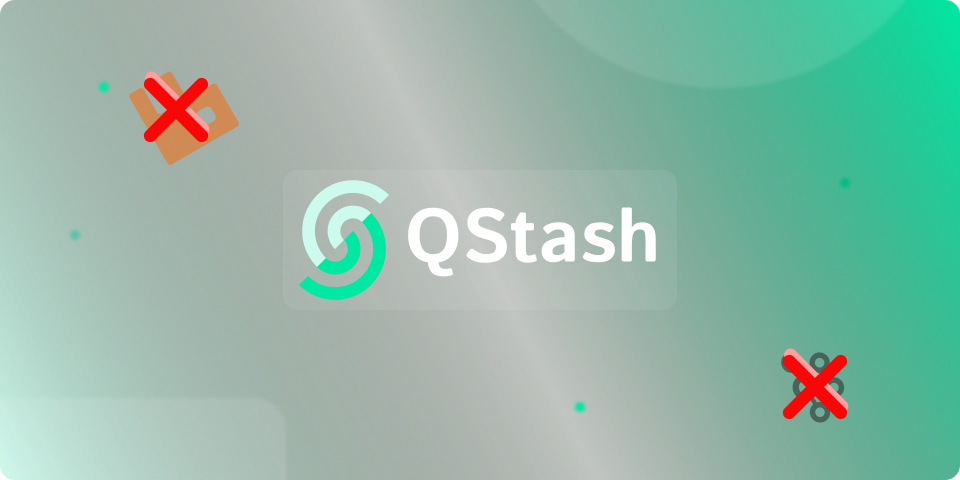
Skip the Message Broker Headache: Upstash QStash vs. RabbitMQ & Kafka
By
D3OXY

By
D3OXY
“You can’t solve a two-line background job with a two-hundred-line Kubernetes manifest.” – every stressed developer ever
Modern apps need background jobs: send a welcome email, resize an image, sync analytics – the usual chores that should not block a user request. When that moment arrives we reach for a message broker, and the internet quickly pushes us toward heavyweight names like RabbitMQ or Kafka.
Here’s the uncomfortable truth: for 90 % of everyday workloads those tools are massive overkill. They ship with clusters, partitions, consumer lag dashboards and night-long pager rotations. What you really need is a fire-and-forget HTTP call with guarantees that your payload will be delivered eventually.
Enter Upstash QStash – a serverless message queue that feels like a webhook on steroids. Let’s see why QStash should be your default choice before you spin up a zoo of replicas.
fetch or curl, consume with your existing REST endpoint. No ports, firewalls, or specialised drivers.If that list already sold you, jump straight to the Quick Start below. Still on the fence? Let’s unpack these claims.
RabbitMQ and Kafka are phenomenal once you really need them: millions of messages per second, exactly-once semantics, complex fan-out topologies. But they come with trade-offs:
For a typical SaaS that queues email jobs or analytics pings, those costs dwarf the benefits.
QStash flips the script by embracing the web:
| Feature | QStash | RabbitMQ / Kafka |
|---|---|---|
| Protocol | HTTPS | AMQP / TCP |
| Hosting | Fully managed, multi-region | Self-hosted or managed cluster |
| Consumer | Any HTTP endpoint | App needs language-specific driver |
| Retries & DLQ | Built-in | Manual setup |
| Pricing | Per message | Per node + traffic + storage |
Under the hood QStash stores your messages in Upstash Redis and delivers them via a global worker pool. You get durability without touching Redis yourself.
npm install @upstash/qstashimport { Client } from "@upstash/qstash";
const qstash = new Client({
token: process.env.QSTASH_TOKEN!,
});
await qstash.publishJSON({
url: "https://api.example.com/webhooks/email",
body: { id: "user_123", template: "WELCOME" },
});Clever catch: because QStash speaks HTTPS you don’t need to expose any private credentials to a worker runtime – the signed request includes everything your receiver needs.
Need a nightly cleanup? One line:
await qstash.schedules.create({
destination: "https://api.example.com/cron/clean",
cron: "0 3 * * *", // every day at 03:00 UTC
});npx @upstash/qstash-cli devThe dev server forwards requests to localhost, so you can debug payloads exactly as production will send them – no containers, no fake brokers.
Every delivery is signed. Verify like so (Next.js example):
import { verifySignature } from "@upstash/qstash/nextjs";
export async function POST(req: Request) {
const body = await req.text();
const isValid = verifySignature({
signature: req.headers.get("upstash-signature")!,
body,
});
if (!isValid) return new Response("Invalid signature", { status: 401 });
// ...handle job
return new Response("ok");
}Imagine you’re using Resend for transactional mails. Direct calls from your API are fine until you hit thundering herd scenarios – a viral campaign triggers tens of thousands of sign-ups in minutes. Dropping those requests into QStash smooths the spikes and gives you retries for free.
send-email task.200 OK.All that with zero extra infrastructure.
If none of the above resonate, save yourself the headache and start with QStash.
Developers often equate “serious” architecture with “complex” architecture. Upstash QStash proves that simplicity scales – especially in the serverless era. The next time you reach for a message broker, ask yourself: do you need a cluster or just a reliable HTTP queue?
Give QStash a spin and you might never look back.
P.S. The code samples above are abridged. For full reference check the official docs.